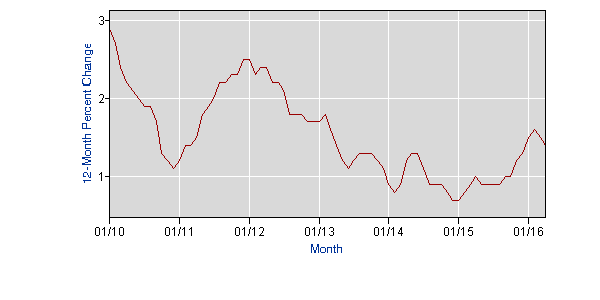May 17, 2016
The first paragraph in a Reuters article on the April consumer price index (CPI) told readers:
“U.S. consumer prices recorded their biggest increase in more than three years in April as gasoline and rents rose, pointing to a steady inflation build-up that could give the Federal Reserve ammunition to raise interest rates later this year.”
Before the cheering for another Fed rate hike gets too loud it would be worth looking at the data more closely. The core CPI has risen modestly in recent months, however inflation is still below the Fed’s 2.0 percent target using its chosen measure, the personal consumption expenditure deflator. And, since 2.0 percent is supposed to be an average, not a ceiling, we have a long way to go up before the Fed needs to move, assuming it takes its own target seriously.
But it’s also worth noting that even the very modest evidence of acceleration in inflation may be largely illusory. The rise in the core CPI has been driven by rising housing costs. Here’s the change in a measure of the core CPI that excludes shelter costs.
CPI without Food, Shelter, and Energy

Source: Bureau of Labor Statistics.
See the acceleration? This measure has been trailing off the last two months and in any case never got as high as it was in late 2011. It has remained under 2.0 percent since the middle of 2012.
The story with housing is that shortages of supply are pushing up prices. If this is bothering the Fed, it is not going to fix the problem by raising interest rates. (Higher rates mean less housing construction — check your intro textbook.) In short, contrary to what the folks at Reuters might tell you, there is not much of a case here for higher interest rates.







Comments